Though life in the islands revolves around the ocean, it is wai, or fresh water, that Hawaiians consider a gift from the gods. Before the Great Māhele in 1848, when Hawai‘i’s lands were redistributed in accordance with Western-style private property ownership, the islands were divided into ahupua‘a, wedge-shaped districts whose bounds are dictated by the flow of fresh water from the mountains to the sea. So intimately aware were Native Hawaiians of the vital role of fresh water in Hawai‘i’s island ecology that all aspects of traditional Hawaiian society were rooted in the understanding that ola i ka wai, or “water is life.”
Located on the lush east side of O‘ahu, the ahupua‘a of He‘eia was particularly rich with this precious resource. Native inhabitants learned to harness He‘eia’s plentiful rainfall and freshwater streams by constructing loko i‘a (fish ponds) along the coast and lo‘i kalo (taro patches) in the inland valleys and flatlands, which acted as retention basins that improved watershed recharge and made He‘eia one of the most agriculturally productive regions on the island.
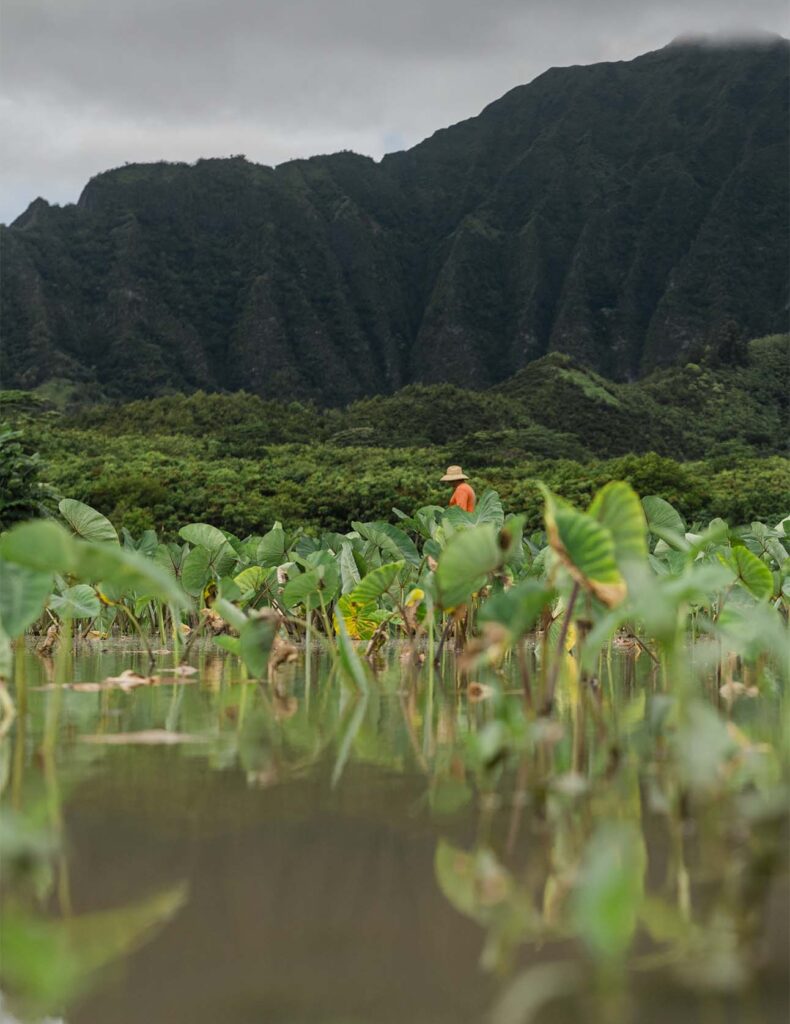
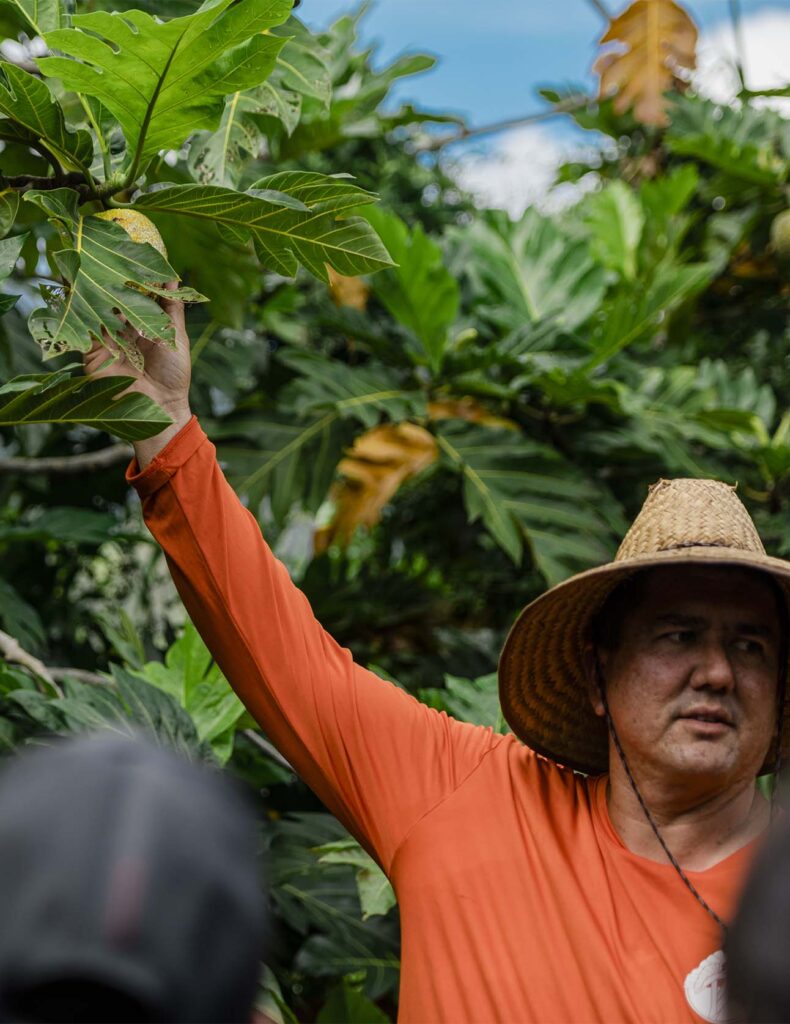
Taro is thought to have been the dominant crop in He‘eia prior to plantation times and again until the 1940s, after which land-use changes transformed He‘eia’s fertile marshland into fallow pastures. As plans for various luxury developments took shape in the area over the ensuing years, it seemed He‘eia would never return to its former abundance—met with fierce opposition from the community, however, the projects never materialized, and the land continued to sit idle for decades.
Meanwhile, the intricate equilibrium of He‘eia’s adjacent Kāne‘ohe Bay was falling farther and farther into disarray. The region’s fallow lands were ineffective at retaining water and filtering debris, encouraging terrestrial runoff and offshore sedimentation. Invasive algae introduced to Kāne‘ohe Bay for aquaculture in the ’70s proliferated unchecked, choking out the bay’s coral reefs. Non-native mangrove planted in He‘eia in the 1920s to mitigate flooding and control erosion also propagated rapidly along the coast, wreaking havoc on the bay’s marine ecosystem.

“As young kids, we grew up driving past this area with a really large mangrove. They called it the ‘stink bridge,’” says Jonathan Kānekoa Kūkea-Shultz, recalling the forest of dense mangrove that grew so thick along a particular bridge over He‘eia Stream that it obstructed views of Kāne‘ohe Bay on one side and the emerald walls of the Ko‘olau mountain range on the other. Shultz continued to frequent the area as a founding member of Paepae o He‘eia, a nonprofit formed in 2001 to restore He‘eia Fishpond—among the largest of many ingeniously engineered Hawaiian fishponds that once thrived in Kāne‘ohe Bay. Over the course of his years working with Paepae o He‘eia and later as a phycologist and Kāne‘ohe Bay marine director with The Nature Conservancy, it became clear to Shultz that to address the bay’s ecological challenges at the source, efforts also needed to be directed upstream.
With support from The Nature Conservancy and the Ko‘olaupoko Hawaiian Civic Club in 2009, Shultz took on the role of executive director of Kāko‘o ‘Ōiwi, a nonprofit that in 2010 was granted a 38-year lease by the Hawai‘i Community Development Authority to convert a 405-acre parcel in the He‘eia wetlands into a productive agricultural and cultural district. For Shultz, that meant returning much of the land back into lo‘i kalo, both to provide the community with a nutrient-dense food source and to revitalize an effective form of natural resource management—something Shultz believes the kūpuna (elders) of He‘eia understood when they originally developed the land for taro cultivation.
Kāko‘o ‘Ōiwi’s lei-making workshops are an invitation to deepen one’s connection with the land.
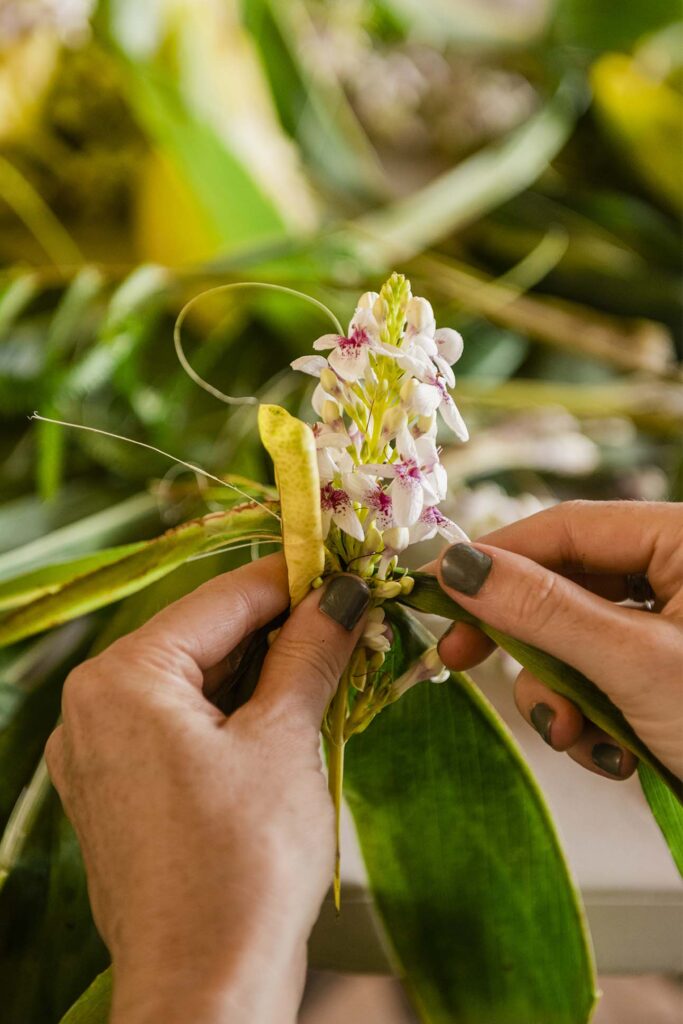
There was much to be done before taro replanting could begin: divert water into the ‘auwai (canals) that irrigated He‘eia’s former network of taro patches, clear the land of invasive vegetation, rehabilitate the soil. To get it done, Kāko‘o ‘Ōiwi turned to the community for help, hosting workdays that enabled volunteers, students, and corporate groups to take part in the restoration effort and, in doing so, forge a closer relationship to the land. “It’s important that we have non-farmers coming in to work the land because non-farmers are part of our food system too,” Shultz says, explaining that in addition to helping tend the lo‘i, visitors are invited to learn the history of He‘eia and the cultural and spiritual practices of those who inhabited it, wander along paths newly lined with fruit-bearing trees such as ‘ulu (breadfruit) and mai‘a (banana), and gather seasonal blooms from an agroforest that Kāko‘o ‘Ōiwi named Pu‘ulani, referring to a spiritual ridge between generations past, present, and future.
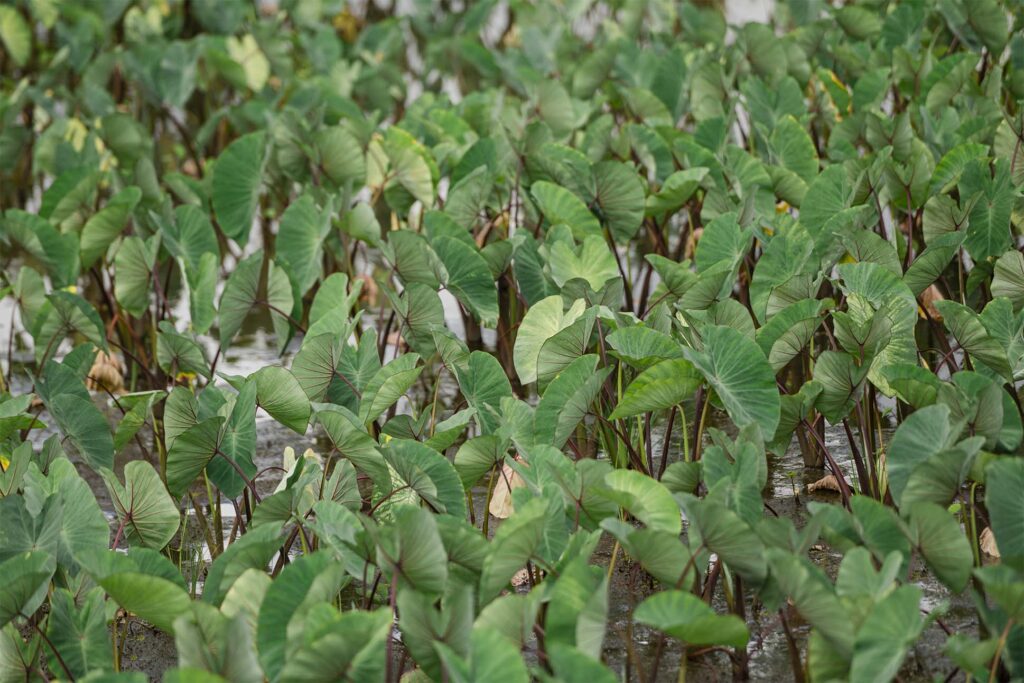
“When we planted Pu‘ulani, the intention was for it to be a place that feeds us in spirit,” says Kāko‘o ‘Ōiwi’s lo‘i manager, Mahealani Botelho. “Meaning we planted things that could be used for medicine, hula, building hale (houses), and lei making.” Raised in a family of lei makers, Botelho remembers asking her aunt how to improve her lei-making skills, to which her aunt replied: Have a relationship with the ‘āina (land). Taking that advice to heart, a mo‘olelo (legend) Botelho often shares with visitors is about the name behind He‘eia’s valley of ‘Ioleka‘a, Hawaiian for “rolling rat.” As the legend goes, the rats of the Ko‘olau mountains were fed up with rats from elsewhere on the island stealing their food, so they tricked the other rats into rolling down the mountain to their deaths. “The Ko‘olau rats knew their ‘āina so well, they were able to protect it,” Botelho says. “If you know your ‘āina, then you can protect your resource.”

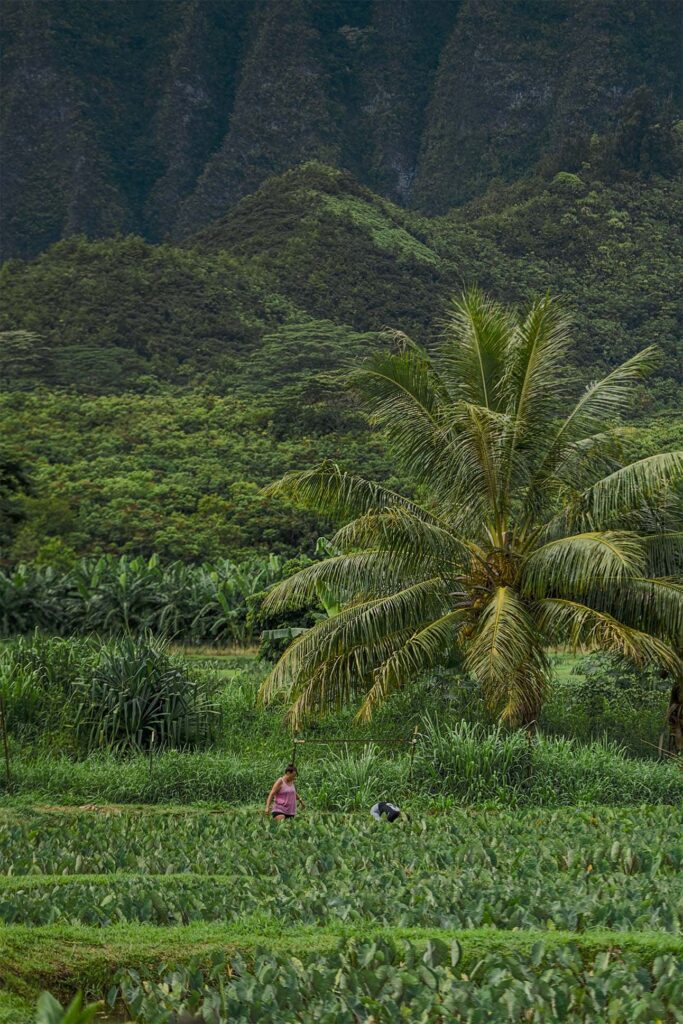
To that end, Kāko‘o ‘Ōiwi sees its mission as two-fold: nurture the land and feed the community in body and spirit. The hope is that, in nourishing the ahupua‘a of He‘eia and those who care for it, the region will also see a resurgence of native culture and wildlife, including the endangered ‘alae ‘ula (Hawaiian moorhen) and ae‘o (Hawaiian stilt) that once flourished there. “We want to continue doing what our ancestors told us to do,” Shultz says. “The sound of the birds—hearing those native systems—is a way that our ancestors communicated with us in the past, and it’s how our ancestors communicate with us now.”
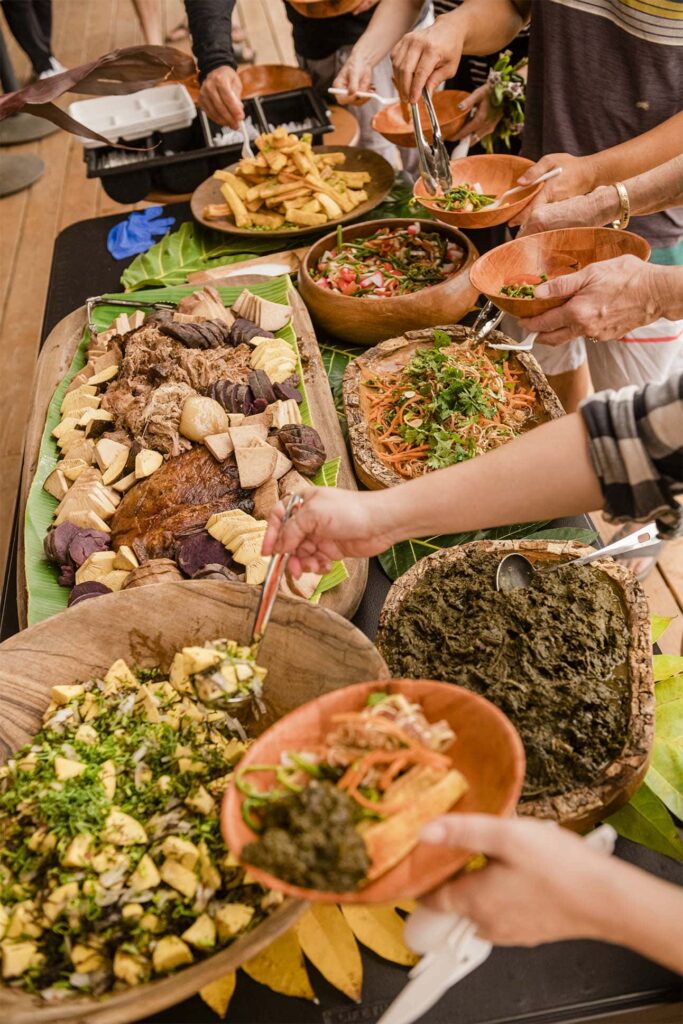
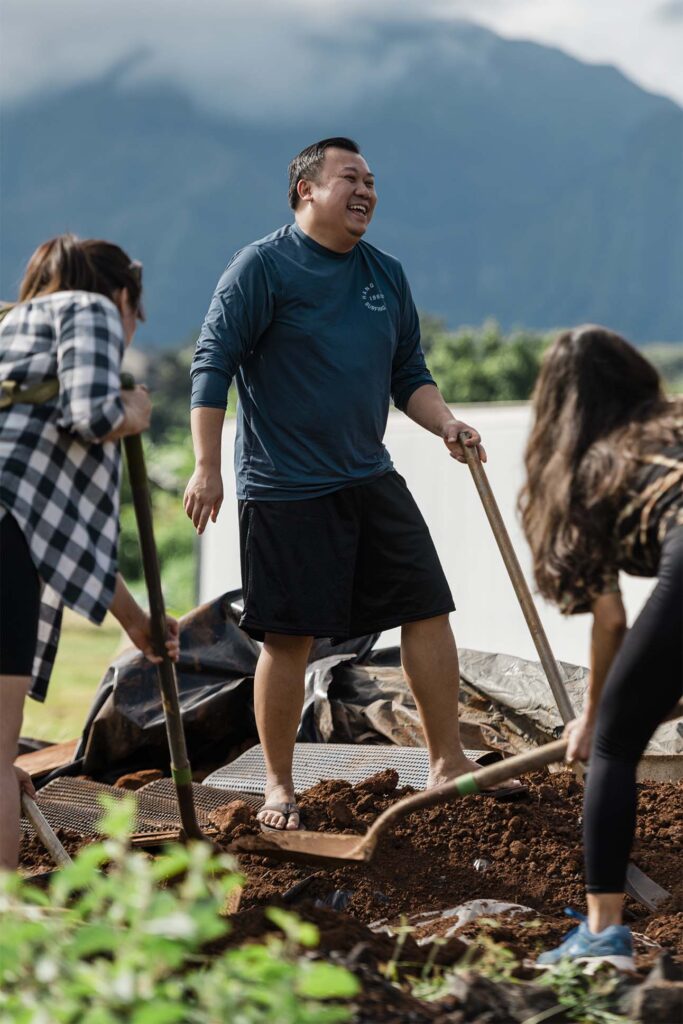
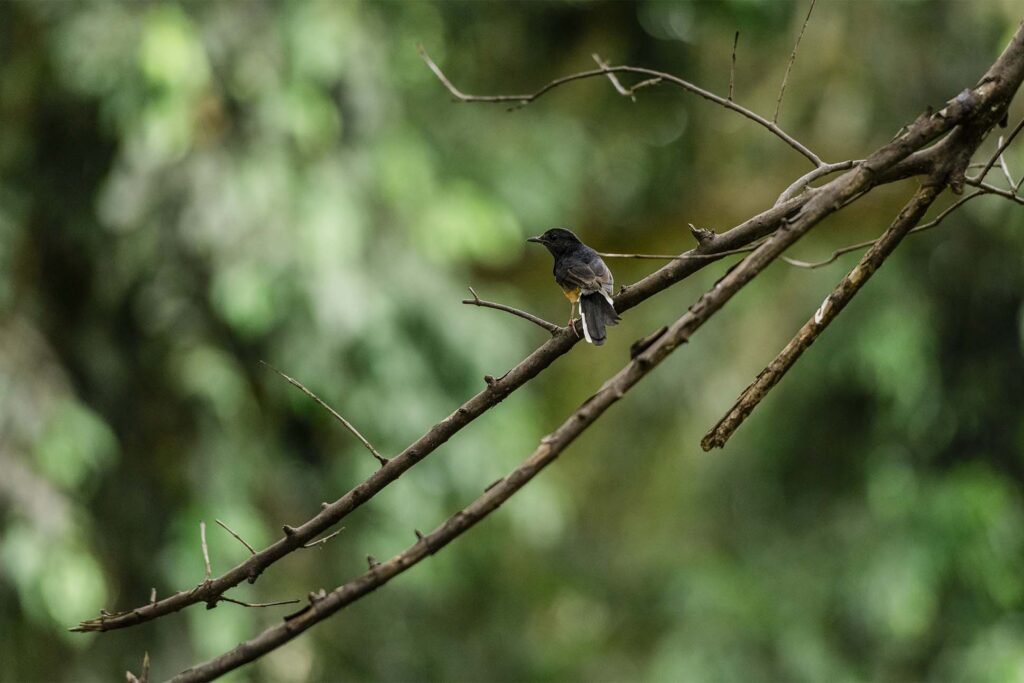
In restoring the wetlands of He‘eia, Kāko‘o ‘Ōiwi is helping to rehabilitate the native wildlife that once flourished there.
“If you know your ‘āina (land), then you can protect your resource,” says Kāko‘o ‘Ōiwi’s lo‘i manager, Mahealani Botelho.



